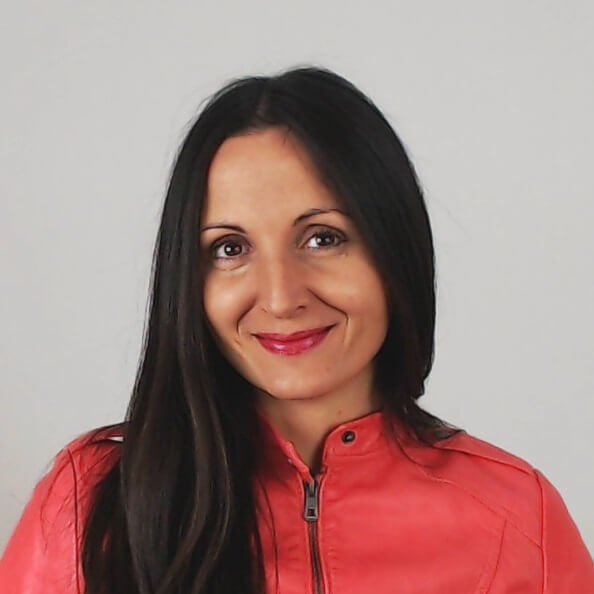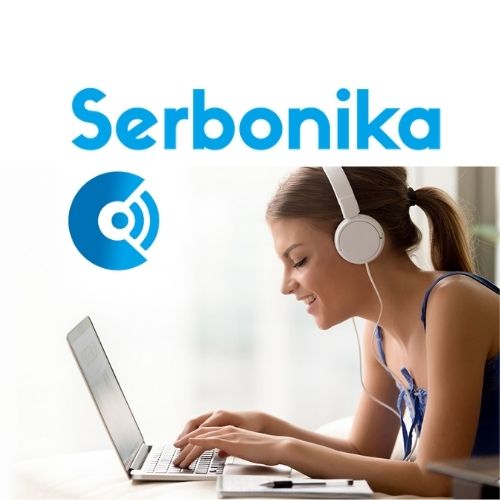Preparations for the Serbian Orthodox Christmas, related holidays, Serbian Christmas Eve, Christmas tree, typical food… All about Serbian Christmas traditions today
The Serbian Language: Complete Review in 9 Key Points
The Serbian Language: Complete Review in 9 Key Points
Common mysteries about the Serbian language solved: Do the Serbs understand Russian? Is Serbian the same as Croatian and Bosnian? Is Serbian grammar complex?
You’ve probably heard some things about the Serbian language, but you’re not sure how to separate the truth from myth: Are Croatian and Serbian the same language? Is the grammar really that complicated? Is writing really that simple? Why do your Serbian friends seem unable to use the articles right?
Hello and welcome, let me present you the Serbian language through 9 key points.
#1 Serbian is a Slavic language.
It shares many common features with Russian, Czech, Polish, Bulgarian, Slovak, Slovenian, and all the other Slavic languages. All languages in the Slavic family have many similar words – just like the languages of the Romance family do (compare, for example, Spanish and Italian), and just like the languages of the Germanic family do (compare, for example, English and German).
Many people also ask if the Serbs can understand the Russians or Poles, or other Slavs. The answer is yes, to a certain degree. If we speak slowly, we will probably recognize and understand many words. We will survive in a Slavic country, we’ll easily get and transmit important information.
But, we won’t be able to have a long or deep conversation – unless the person we’re talking to has learned the Serbian language, or we have learned their Slavic language.
#2 Standard Serbian language is the same as Croatian, Bosnian and Montenegrin standards.
Things are different between the Serbs, Croats, Bosnians and Montenegrins. Our four standards are based on the very same dialect. Our languages are basically the same. We can even argue and joke and exchange ideas, with everyone speaking their own variant of the language. I wrote more on the subject in this article.
This similarity is the reason why the Serbian language is taught together with Croatian, Bosnian and Montenegrin at universities around the world. This is why they use the not so popular term BSCM for it.
If you want to read more about the exact differences between Serbian and Croatian, you can read the complete list of them in this article.
#3 Slavs can learn Serbian very quickly.
You bet they can! If you know a Slavic language, you have a huge advantage over non-Slavic speakers.
In fact, I speak almost exclusively Serbian from the very first class with any student that knows a Slavic language. In my experience, they can understand about 85% of what I speak.
However, sometimes they find it difficult to stop using their language’s grammar when speaking or writing Serbian. That’s their weak point.
#4 Serbian writing is simple.
That’s true – even though it hasn’t always been that way. It used to be quite complex, but it was reformed in the 19th century. What makes our writing complex today is the simultaneous usage of two scripts: Latin and Cyrillic. You can read more about all that in this article.
Today we have a phonetic orthography – that means we write as we speak. Each sound has it’s own letter and it’s very easy to learn. However, for some English speakers it’s quite challenging to stop reading and pronouncing Serbian the the English way. They need lots of practice to start reading the Serbian way automatically, and the best place to start is the Free Introductory Serbian Course we published on Serbonika.com.
Many Serbian learners avoid the Cyrillic script as it scares them in the beginning. But many insist on using it and end up reading it with ease. Here you can start learning the Serbian Cyrillic script, which is said to be perfectly adapted to the Serbian language.
#5 Serbian grammar is complex.
You bet it is. But let me first tell you what the Serbian language doesn’t have and what is difficult for us to learn in other languages:
- Umlauts, in German or French. Pronouncing those sounds always twists our lips in a weird way and it feels silly!
- Vowels between [a] and [e] (like in the word “can” or “hat”), or between [i] and [ə] shwah (like in “sin”). A typical Serb will simply pronounce them the Serbian way: [e] and [i].
- Nasal sounds, like in French. They used to exist in the old language and they’re kept in Polish, but the Serbian language lost such sounds centuries ago.
- Articles: definite (the) or indefinite (a, an). The most tricky part for us Serbs to learn in a foreign language! Even advanced English speakers will easily omit the articles. We just don’t feel the need to use them.
- Conjunctive – it’s even difficult to understand the purpose of it.
- Continuous tenses and so many verbal tenses that other languages have. We use our verbal aspects instead, to express the same meanings.
That’s why we have difficulties with these features when learning a foreign language. Especially the articles are something we struggle to learn and use properly. If I’m making mistakes in English, that’s usually in articles – and you’ve probably already noticed that!
#6 Gender equality is impossible in the Serbian language.
Are you a man or a women? In the Serbian language it makes a big difference, grammatically and lexically. We use different words and personal pronouns for men and women.
For example, if you’re male, you are my “učenik” (male student) and if you’re female, you are my “učenica” (female student). Masculine gender typically ends in a consonant, while feminine gender ends in -a.
This video will help you learn about masculine and feminine gender in Serbian. It’s perfect for beginners, and it’s a part of my FREE introductory Serbian course at Serbonika.
With such a sharp distinction, it is very difficult, almost impossible, to use a gender neutral speech. A general gender in Serbian, just like in many gender-aware languages, is masculine. If we’re adressing a group of people of both sexes, we have to use the masculine gender. Even if I’m talking about myself and my husband, I have to use the masculine gender. That’s how our language works!
Some people try to avoid this and to reffer to both sexes in one word. In their emails they’ll write: “dragi/e” (combining dragi – dear, masculine plural; and drage – dear, feminine plural). But it just looks silly!
Most professions have feminine and masculine form, but when talking about a profession, it’s normal to use the masculine gender. I am a woman and I am a female teacher (profesorica), but when desciribng my profession, I will often use the masculine word: profesor srpskog jezika (a Serbian language teacher).
Some professions were traditionally male and there were no feminine gender words to describe them. A few decades ago nobody had troubles with that. Today we’re creating new forms and they are becoming a part of our language. For example, psiholog was a traditional masculine form, used both for female and male psychologists. A few decades ago a new female form emerged: psihološkinja.
#7 The standard Serbian language has this set of specific features:
- 2 standard pronunciations: ekavian and ijekavian.
- 2 scripts (Cyrillic and Latin),
- and 2 alphabets, accordingly.
- 30 sounds and 30 letters.
- 5 vowels.
- A consonant that can act as a vowel: R.
- 4 tones and a post-tonal length. That means 6 different ways of pronouncing a vowel (I teach about this in the Serbian Cyrillic Reader course).
- 7 cases (Nominative, Genitive, Accusative, Dative, Instrumental, Locative);
- definite and indefinite form of adjectives;
- 7 tenses (1 present, 4 past and 2 future tenses);
- 2 moods (conditional and imperative);
- 2 verbal aspects (perfective and imperfective) and
- free word order with a fixed set of rules that has to do with clitics.
And here’s a tip for you: open your mind in terms of word order, as I explain in this video.
#8 You don’t need all of this grammar when you start learning Serbian!
Take it easy. For example, the most dreaded feature of the Serbian grammar are the cases. You don’t have to learn them all, especially in the beginning! If you’re not familiar with a language with cases, make sure you learn only 4 of them for the first 6 months or a year: Nominative, Accusative, Locative and Genitive. (I talk about them in this article about how to learn the Serbian cases.)
#9 Beginners should learn the Serbian grammar slowly and patiently.
It’s the best to take it easy. Learn it piece by piece and make sure to memorize lots of vocabulary. That will be of tremendous help. Learn to recognize two parts of a word: the root, that tells you the meaning, and the ending, that tells you what role this word plays in a context. Learn to recognize the root, and guess the function and meaning.
by Magdalena Petrovic Jelic
Founder of Serbonika
Serbian language teacher and entrepreneur, language lover and polyglot, but also a mother and a relentless storyteller.
On a mission to create the best web space for learning Serbian: Serbonika.

Serbonika
Najbolja metoda za učenje srpskog jezika
The best method to learn Serbian
Serbian Christmas Traditions in the 21st Century
Serbian Verbal Aspect, an Essential Guide for Beginners
Serbian verbal aspect explained in detail. Tips for recognizing the two aspects with examples, so you can finally understand the most boggling feature of the Serbian language
Fear of Speaking Serbian – 6 Best Tips on Overcoming Your Foreign Language Anxiety
Learning Serbian, but embarrassed to talk? That’s foreign language anxiety and it’s very common. Here are my best tips to overcome your fear of speaking Serbian.
The Magnificent Slivovitz – plum brandy
All about the Serbian moonshine: How to make Slivovitz, plum brandy, 11 more even better fruit brandies made in Serbia, and the special glass rakija is served in.





